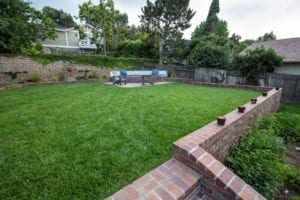A beautifully manicured lawn is the hallmark of a well-maintained property. When it comes to creating the perfect lawn in Orange County, the choice of grass is paramount. Orange County’s unique climate and soil conditions necessitate a careful selection of grass types to ensure year-round lushness.
In this guide, we’ll explore how to choose the best grass for your Orange County lawn, taking into account regional climate zones, specific yard conditions, and the importance of grass variety.

Understanding Regional Climate Zones
Your location within Orange County plays a critical role in determining the type of grass that will thrive on your lawn. Orange County can be broadly divided into three climate zones:
1. Northern Zone
This zone encompasses the Northern United States and Canada. It experiences moderate summers and harsh winters, making it ideal for cool-season grasses like Kentucky bluegrass, perennial ryegrass, and tall fescue. These grasses can endure cold temperatures while maintaining vibrant green lawns during the growing season.
2. Southern Zone
In areas with hot summers and mild winters, such as Orange County, warm-season grasses flourish. Consider varieties like St. Augustinegrass, Bermudagrass, centipedegrass, and zoysiagrass. These grasses are well-suited to the region’s warm climate and exhibit resilience in the face of high temperatures.
3. Transition Zone
This region experiences both hot summers and cold winters, making lawn care a unique challenge. Tall fescue is a popular choice in the Transition Zone due to its ability to tolerate extreme temperatures. However, homeowners may also grow Bermudagrass, zoysiagrass, and Kentucky bluegrass while managing the challenges of dormancy and winter damage.
Consider Specific Yard Conditions
Beyond the regional climate zone, your yard’s specific conditions should guide your grass selection:
1. Low-Input Areas
If you have remote areas that are challenging to water or fertilize, consider buffalograss, a hardy option suitable for most of North America. Fine-leaf fescues are also excellent for low-input sites. In the Southeast, centipedegrass is an ideal choice for low-maintenance areas.
2. Shaded Sites
For yards with limited sunlight, fine-leaf fescues are your best bet, as they are highly tolerant of shade. In the South, most St. Augustinegrass varieties perform reasonably well in shaded conditions, with the exception of the Floratam variety.
3. High-Traffic Sites
In the North, blends of Kentucky bluegrass and perennial ryegrass are optimal for areas with heavy foot traffic. In the South, Bermudagrass stands out for its rapid recovery from wear and tear.
4. Salty-Sites or Sites Using Effluent Water
If your lawn is exposed to salt sprays or uses effluent water with high salt levels for irrigation, consider seashore paspalum. This grass variety boasts exceptional salt tolerance and is well-suited for sandy coastal locations.
The Significance of Grass Variety
Within each grass species, numerous varieties offer unique characteristics, including texture, color, growth rate, and resistance to diseases and pests. Opting for newer, improved grass varieties can provide hidden advantages for your lawn’s performance. These varieties often better withstand adverse conditions.
In addition, to maximize the benefits of species like tall fescue, perennial ryegrass, and Kentucky bluegrass, consider using a mix of varieties. Also, prepackaged mixes designed for specific regions simplify the selection process. While generic seed may be cheaper, it often lacks the advantages of newer varieties, potentially resulting in lawn issues.
For optimal results, stick to recognized brands and purchase seeds from reputable garden centers. Besides, these establishments typically stock current varieties well-suited to your region’s conditions.

Creating the perfect lawn in your Orange County home involves making informed decisions based on your location, yard conditions, and grass variety. By carefully selecting the right grass type and variety, you can ensure a thriving, resilient lawn that enhances your property’s beauty and value. Whether you’re in the Northern Zone, Southern Zone, or Transition Zone, your Orange County lawn can be a lush, inviting outdoor space that you’ll enjoy year-round.
To learn more, consider checking out 10 Best Curb Appeal Ideas for Every Budget.


